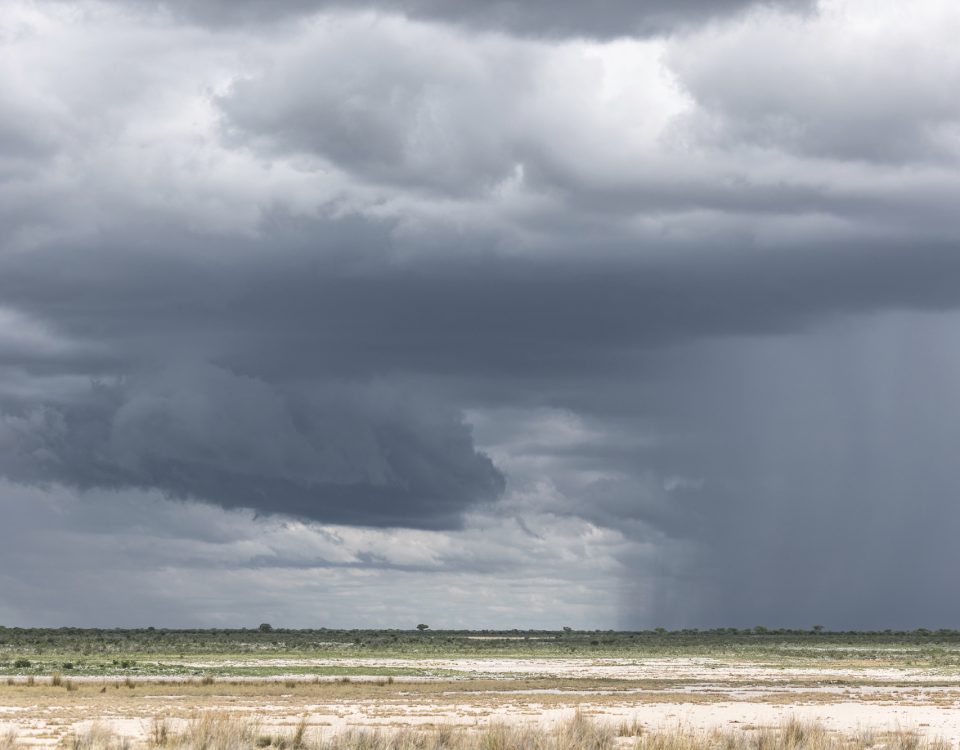EVENTS | Calendar Dec 2014 & Jan 2015
December 18, 2014Travel tips for tree lovers
December 22, 2014Compiled Annabelle Venter
Living in such a dry climate for so much of the year as we do here in Namibia, the anticipation of rain is a major feature in our lives, as well as for our plants and animals. By November the clouds start building up and it becomes hot and oppressive, especially up north. Then suddenly the long wait is over and frayed tempers are soothed by the cooler temperatures – especially at night – and sleep becomes less elusive again.
Listening to the rain and thunder and watching the flashing skies is a national pastime that is guaranteed to put a smile on anyone’s face. By February the rains are in full swing and the countryside turns a beautiful Irish green! Rivers that are dry for most of the year, suddenly become raging torrents. The weather at the coast at this time is balmy, summery and dry – perfect for swimming and summer holidays.
Our rainy season generally continues till early April, when the migratory birds leave Namibia for another year.
Average INLAND rainfalls are: December, 47 mm; January, 77 mm; February 73 mm.
Average NORTH-EASTERN rainfalls are: December, 83 mm; January, 128 mm; February 147 mm.
DID YOU KNOW?
The scent of rain on dry earth, or the scent of dust after rain, is referred to as petrichor, a word of Greek origin defined as a pleasant smell that frequently accompanies the first rain after a long period of warm, dry weather.
MINIMUM/MAXIMUM TEMPERATURES IN DEGREES CELSIUS
| December | January | February | |
| WINDHOEK | 16/30 | 17/30 | 16/28 |
| SWAKOPMUND | 14/22 | 15/24 | 16/23 |
| ZAMBEZI REGION | 19/32 | 19/31 | 18/30 |
SUNRISE AND SUNSET
| SUNRISE WINDHOEK | SUNSET WINDHOEK | |
| 21 December | 06:04 | 19:35 |
| 21 January | 06:24 | 19:41 |
| 21 February | 06:43 | 19:26 |
MOON PHASES FOR SUMMER 2014/2015
| FULL MOON | NEW MOON | SUMMER SOLSTICE – the longest day of the year |
| 6 December | 22 December | 21 December |
| 5 January | 20 January | |
| 4 February | 19 February |
SUMMER TIME
Namibia is on the same time as the rest of Southern Africa from September to April, namely GMT+2 hours.
SPECIAL SUMMER SAFETY PRECAUTIONS
Riverbeds – Watch out for flash floods in riverbeds during summer. Never camp in a riverbed at this time of year, and always wade through wet sand first to establish the depth before you drive across.
Slippery roads – The tar roads are often slippery when the first rains fall, so exercise caution and don’t drive too fast.
Lightning – Many people are killed by lightning in Africa each year. Move indoors if an electrical storm is approaching and don’t talk on the phone! Keep away from anything that conducts electricity. We sometimes have spectacular storms here in Namibia!
SUMMER HEALTH HAZARD
- The hot and humid weather conditions in summer make it an ideal breeding time for mosquitoes. MALARIA is still the major killer disease in Africa and you will need to take precautions when visiting at this time of year. Generally anywhere north of Windhoek can be a high-risk area, especially up in the wetter northern parts. Take prophylactics before you leave home, and should you become ill, remember to mention to your doctor where you’ve been.
- Spray on mosquito repellent; wear long sleeves, leggings and socks at night; and sleep under a net if possible.
- Symptoms include headache, fever and rigours (violent shivering), and typically start one week to a month after you’ve been bitten.
This article was first published in the Summer 2014/15 issue of Travel News Namibia.

